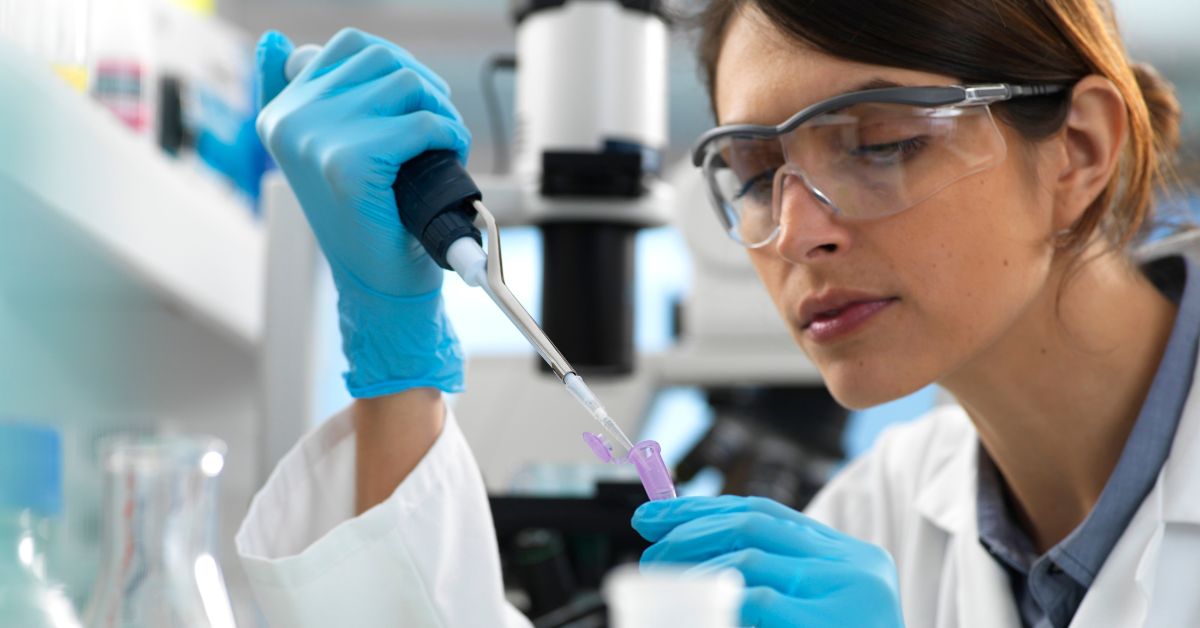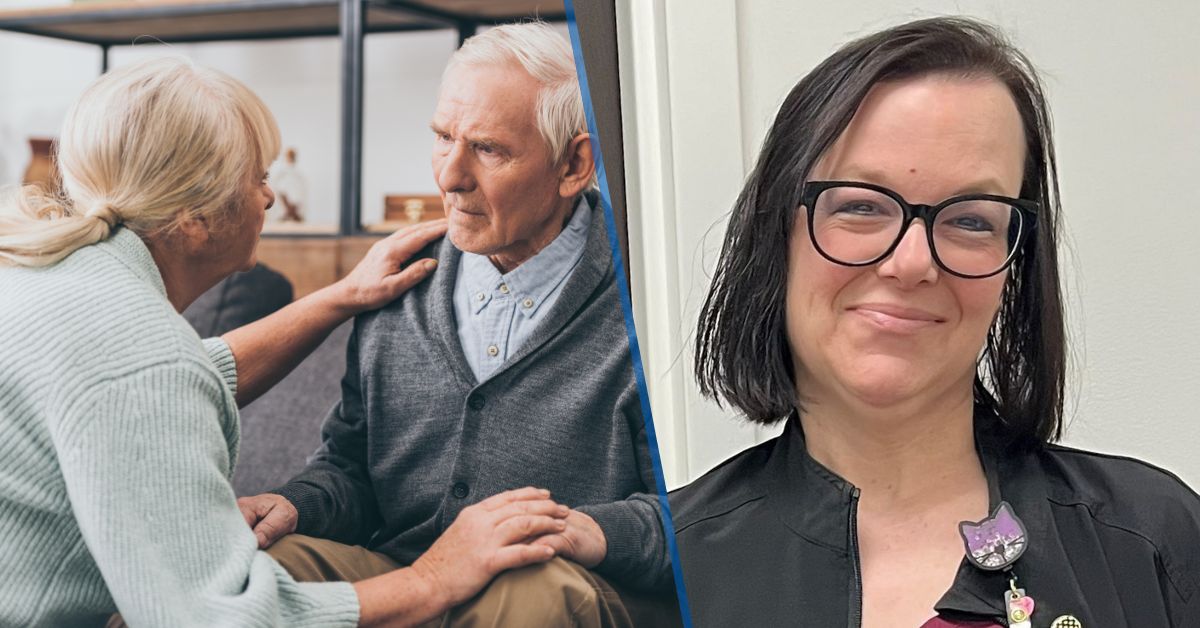It’s crucial to grasp the differences between diabetes type 1 vs. type 2.
An estimated 1.6 million Americans have type 1 diabetes, while about 90 to 95 percent of the 38 million Americans with diabetes have type 2. This makes understanding how these conditions develop and how to manage them is of utmost importance.
“Accurate diagnosis of diabetes type is crucial for effective management,” Sheetal Bulchandani, MD, an endocrinologist at Bon Secours – Southside Endocrinology, shares.
If you think you might have diabetes, make an appointment with your primary care provider to get a diabetes screening and discuss your treatment and management options.
What is type 1 diabetes?
Type 1 diabetes is like having a completely closed faucet – your body can’t produce any insulin to help blood sugar feed your cells. This condition occurs when your immune system attacks and destroys the insulin-producing cells in your pancreas. As a result, glucose accumulates in the bloodstream and cannot enter the cells that need it for energy.
The exact cause of type 1 diabetes remains unclear, but it is thought to be influenced by both genetic and environmental factors. This condition commonly develops in children and young adults, which is why it was once referred to as juvenile diabetes. However, adults can also be diagnosed with type 1 diabetes and must manage the condition with lifelong insulin therapy, administered through injections or an insulin pump.
Dr. Bulchandani adds, “We now understand that type 1 diabetes can present later in life, not just in children, while type 2 diabetes is increasingly common among adolescents. Because the management strategies and disease trajectories differ significantly, distinguishing between the two is essential. This differentiation can typically be made with the help of blood tests alongside a comprehensive clinical assessment.”
What are the health problems caused by type 1 diabetes?
If left untreated, type 1 diabetes can result in severe complications and even be fatal.
Maintaining an average glucose level is essential for minimizing the health risks linked to living with type 1 diabetes, which include:
- Catastrophic kidney failure
- Severe nerve damage or loss of sensation in the limbs
- Significant heart and blood vessel disease
What is type 2 diabetes?
Type 2 diabetes can be likened to a clogged faucet; your body produces insulin, but it struggles to use it effectively. As a result, glucose builds up in your blood because it cannot enter your cells properly.
People can develop type 2 diabetes at any age, often due to years of poor diet and lack of physical activity.
Other risk factors for developing type 2 diabetes include:
- Being 45 years old or older
- Belonging to specific ethnic groups (e.g., African American, Asian American, Hispanic, American Indian or Pacific Islander)
- Having a family history of diabetes
- Smoking
What are the health problems caused by type 2 diabetes?
If left untreated, type 2 diabetes can cause significant damage to the body. Complications may develop gradually but can become life-threatening over time.
These complications include:
- Alzheimer’s disease
- Eye conditions such as cataracts and glaucoma, which can potentially lead to blindness
- Hearing problems
- Slow healing of cuts and infections, which may result in the amputation of severely damaged limbs
What are the similar symptoms of type 1 and type 2 diabetes?
Type 1 and type 2 diabetes share similar symptoms – type 1 tends to come on quickly, while type 2 develops gradually.
Common symptoms include:
- Extreme fatigue
- Excessive thirst and hunger
- Blurry vision
- Slow-healing cuts and infections
- Frequent urination
With type 1 diabetes, you may also experience weight loss without trying, irritability and mood changes. For type 2 diabetes, tingling, pain or numbness in your hands and feet are more common.
Treatments for diabetes
If you suspect you have diabetes, it’s imperative to seek immediate medical advice from your primary care provider. Blood tests can diagnose both types of diabetes, and the treatment approaches vary depending on the type and severity of the condition.
- For type 1 diabetes, it requires daily insulin injections or an insulin pump to maintain healthy blood sugar levels. A diet rich in lower-carb foods and regular exercise also help manage the condition.
- For type 2 diabetes, the focus is on significant lifestyle changes, including diet and exercise. These changes can be powerful tools in managing your condition. Medications are available and ongoing research continues to develop new options, but remember, your actions can make a significant difference.
Diabetes type 1 vs. type 2: FAQs
Q: Which is more serious, diabetes type 1 or type 2?
A: Both types can lead to severe complications if not managed properly. Type 1 diabetes often requires lifelong insulin therapy. Type 2 diabetes, though potentially reversible with lifestyle changes, can lead to severe health issues if left untreated.
Q: Does type 2 require insulin?
A: Not always. While some people with type 2 diabetes may need insulin to manage their blood sugar levels, many can control their condition with oral medications, diet and exercise.
Q: How do I know if I have type 1 or type 2 diabetes?
A: A doctor can determine your diabetes type through blood tests measuring your glucose level and insulin production. Symptoms also provide clues – type 1 typically presents suddenly in children and young adults, while type 2 develops gradually.
Q: Is type 2 diabetes reversible?
A: For some people, it can be managed and even reversed through significant lifestyle changes, including healthy eating, regular exercise and maintaining a healthy weight. This possibility should serve as a source of optimism and motivation for those dealing with type 2 diabetes.
Q: What are the first warning signs of type 2 diabetes?
A: Early signs of developing type 2 diabetes include increased thirst, frequent urination, weight loss, fatigue and blurred vision. These symptoms develop slowly over time.
How we can help
It’s important to recognize the differences between diabetes type 1 vs. type 2. Knowing how they differ can help you better understand your options and make informed decisions about your care. If you suspect you may have diabetes, make an appointment with your primary care provider to get a diabetes screening.
Learn more about the endocrinology services and primary care services we provide at Bon Secours.





